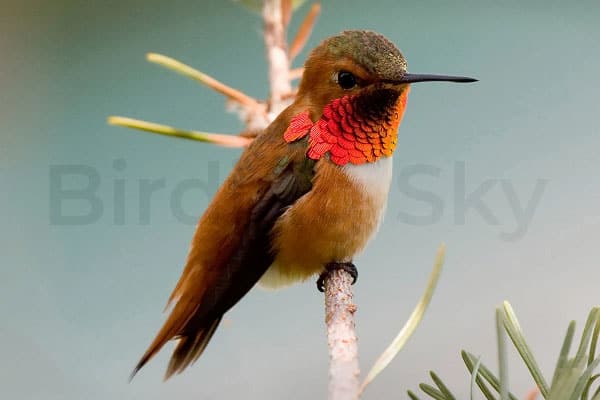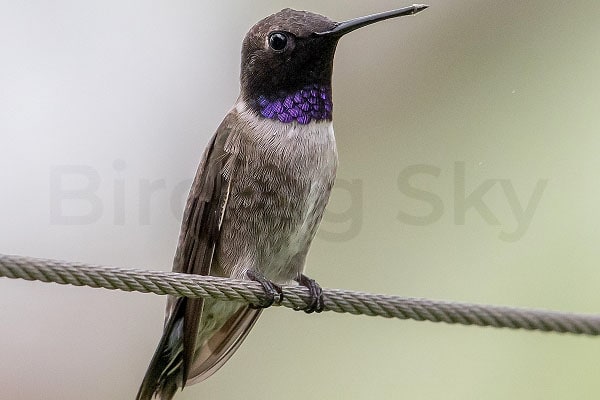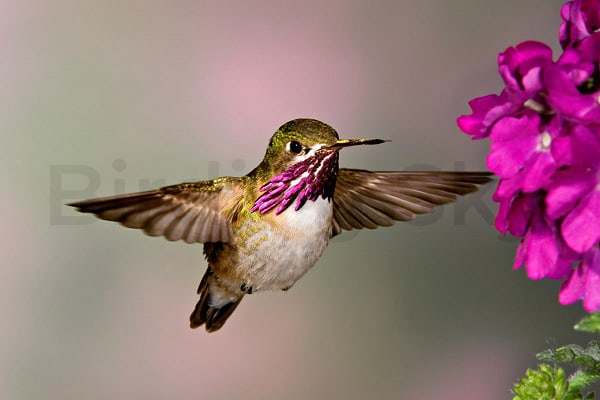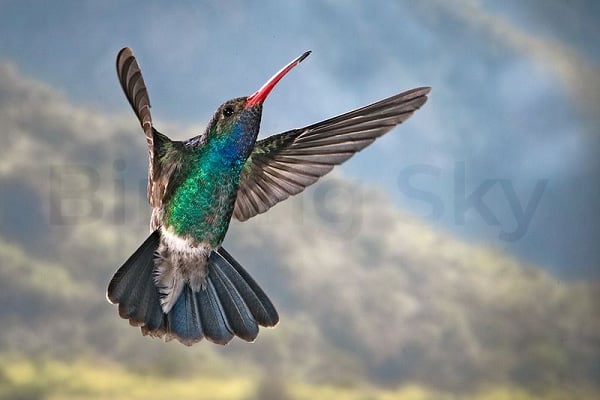Have you ever wondered how many species of hummingbirds inhabit the vast prairies of Kansas? Prepare to be amazed as we delve into the hidden world of these tiny aerial acrobats. From the dazzling Ruby-Throated Hummingbird to the elusive Rivoli’s Hummingbird, discover the stunning diversity of hummingbird species that call Kansas home.
Join us on a journey through the sunflower state as we unveil the secrets of these magnificent creatures. Get ready to be enchanted by their vibrant colors, impressive migrations, and distinct behaviors. Whether you’re an avid bird watcher or simply curious about nature’s wonders, this ID guide with pictures is your ticket to unlocking the captivating world of hummingbirds in Kansas.
So, are you ready to embark on an adventure and become an expert hummingbird identifier? Let’s dive in and explore the top 10 species of hummingbirds that grace the skies of Kansas.
Key Takeaways:
- Discover the fascinating world of hummingbirds in Kansas
- Learn about their unique characteristics and behaviors
- Unveil the secrets of identifying different hummingbird species
- Find out when and where to spot these beautiful birds in Kansas
- Be inspired by stunning pictures showcasing the beauty of hummingbirds
1. Ruby-throated hummingbird
The ruby-throated hummingbird is a captivating species that can be frequently observed in Kansas. These tiny birds, known for their vibrant colors and rapid wingbeats, are a delight to watch.

Characterized by their emerald green feathers and the distinctive red patch on the throat of the males, ruby-throated hummingbirds are easily recognizable. Females lack the bright throat color and are generally duller in appearance.
To catch a glimpse of these marvelous creatures in Kansas, it’s important to know their preferred habitats. Ruby-throated hummingbirds are commonly found in woodlands, gardens, and meadows with abundant flowers. They are particularly attracted to nectar-producing plants like trumpet vines and jewelweed.
During migration, which typically occurs in spring and fall, these hummingbirds pass through Kansas on their way to breeding or wintering grounds. Creating a hummingbird-friendly garden with a variety of flowers and feeders can increase your chances of attracting these beautiful birds.
“Watching a ruby-throated hummingbird hover in mid-air while feeding is a magical sight. Their agility and speed are simply astounding.”
To help you identify ruby-throated hummingbirds, here are some key features:
- Vibrant colors: Male birds have a stunning iridescent green color on their upperparts, with a white breast and belly. The most distinctive feature is their ruby-red throat, which shimmers in the sunlight. Females have green upperparts and a white throat and belly.
- Size: Ruby-throated hummingbirds are among the smallest bird species in North America, measuring around 3-4 inches in length.
- Flight pattern: They hover in mid-air, rapidly beating their wings up to 80 times per second, and can fly in any direction, including backward.
- Distinctive bill: Their long, slender bill is perfectly adapted for extracting nectar from flowers.
Feeding ruby-throated hummingbirds can be a rewarding experience. Consider setting up a hummingbird feeder with a sugar-water solution (4 parts water to 1 part white granulated sugar), and remember to clean and refill it regularly.
With their vibrant plumage and incredible aerial acrobatics, ruby-throated hummingbirds are a true marvel of nature. Keep your eyes peeled for these tiny treasures in the Kansas skies!
| Feature | Male | Female |
|---|---|---|
| Upperparts | Iridescent green | Green |
| Throat | Ruby-red | White |
| Underparts | White | White |
| Size | Approximately 3-4 inches | Approximately 3-4 inches |
| Bill | Long and slender | Long and slender |
Must Read HUMMINGBIRDS IN OKLAHOMA
2. Rufous Hummingbird
The Rufous Hummingbird is a migratory species that grace the skies of Kansas during certain times of the year. Known for their fiery orange-red plumage and feisty nature, these tiny birds bring a touch of vibrance to the Kansas landscape.

Unique Features: The Rufous Hummingbird is easily recognizable by its bright rufous-colored feathers, which cover most of its body. Males exhibit a stunning iridescent patch on their throat, shimmering in shades of orange and red. This species is slightly larger than other hummingbirds, with a length of 3-4 inches and a wingspan of approximately 4-5 inches.
Habits: Rufous Hummingbirds are known for their aggressive behavior and territorial nature. They fiercely defend their feeding areas from other birds, including larger species. These tiny dynamos have an intense energy, often seen darting swiftly through the air with incredible agility. They are highly adaptable and are known to feed on nectar from a wide range of flowering plants, as well as insects.
When and Where to Spot Them: Rufous Hummingbirds typically arrive in Kansas during the spring breeding season and can be found in various locations across the state. They favor open woodlands, gardens, and meadows with abundant nectar sources. Look for them near flower beds, hummingbird feeders, and areas with blooming native plants. They are more commonly observed in the western regions of Kansas, such as the High Plains and the Colorado border.
If you’re lucky enough to catch a glimpse of the Rufous Hummingbird in Kansas, take a moment to appreciate its beauty and marvel at its impressive athleticism. These tiny creatures are a testament to the diversity and wonder of the avian world.
| Scientific Name | Size | Wingspan | Unique Features |
|---|---|---|---|
| Selasphorus rufus | 3-4 inches | 4-5 inches | Bright rufous-colored feathers, iridescent throat patch in males |
Related Hummingbirds in New York
3. Anna’s Hummingbird
While Anna’s hummingbird is primarily found on the West Coast, they occasionally visit Kansas as well. These stunning birds are known for their vibrant colors and distinctive behavior. Here are some interesting facts about Anna’s hummingbirds:

- Identification: Anna’s hummingbirds are small in size, measuring around 4 inches long. The males have a beautiful iridescent rose-pink throat, while the females have a more muted color palette.
- Habitat: In Kansas, Anna’s hummingbirds can be found in gardens, parks, and wooded areas with flowering plants. They are attracted to nectar-rich flowers, especially those with tubular shapes that allow them to feed easily.
- Migratory Patterns: Anna’s hummingbirds are non-migratory birds on the West Coast, but some individuals have been known to stray eastward during the winter months. Their presence in Kansas is sporadic and unpredictable.
- Behavior: These energetic birds are known for their aerial displays and acrobatic flight patterns. They can hover, fly backward, and even dive at high speeds. Anna’s hummingbirds are territorial and will fiercely defend their feeding and breeding areas.
If you spot an Anna’s hummingbird in Kansas, count yourself lucky! Take a moment to observe these magnificent creatures as they dart around, feeding and displaying their aerial prowess.
4. Black-Chinned Hummingbird
The Black-chinned hummingbird is a captivating species known for its stunning iridescent green throat, which distinguishes it from other hummingbird species. These graceful birds can be found in various habitats across Kansas, from woodlands to deserts. Let’s explore their fascinating behaviors and preferred locations in the state.

Behaviors
Black-chinned hummingbirds are agile flyers, capable of hovering, darting, and even flying backward. They are known for their distinctive buzzing sound created by their rapidly flapping wings, which can reach up to 80 beats per second. These birds are also highly territorial and will fiercely defend their feeding and nesting areas from other hummingbirds.
Preferred Habitats
The Black-chinned hummingbird favors semi-arid environments with abundant nectar sources, including flowers such as penstemon and paintbrush. They also rely on insects for extra protein and will snatch them from mid-air during their acrobatic flights. These hummingbirds often nest in trees or shrubs, creating small cup-shaped nests secured with spider silk and camouflaged with lichens and moss.
| Common Name | Scientific Name | Habitat | Diet |
|---|---|---|---|
| Black-Chinned Hummingbird | Archilochus alexandri | Hillsides, canyons, riparian zones | Nectar, insects |
5. Calliope Hummingbird

With its small size and vibrant plumage, the Calliope Hummingbird is a delight to observe. This species is known for its distinctive characteristics and can be found in select areas of Kansas. To identify the Calliope Hummingbird and distinguish it from similar species, keep an eye out for the following key features:
- Size: The Calliope Hummingbird is the smallest bird in North America, measuring only 3-3.5 inches in length.
- Plumage: Males have a vibrant magenta gorget (throat) with streaks of white, while females have a white or buff-colored throat with faint streaks. Both genders display green upperparts.
- Tail: This species has a short, slightly notched tail.
The Calliope Hummingbird is primarily found in mountainous regions, but during migration, they may pass through Kansas. Look for them in meadows, open woodlands, and brushy areas. Providing a variety of nectar-rich flowers and feeders in your yard might attract these beautiful birds.
“Observing the Calliope Hummingbird in flight is a remarkable experience. Its rapid wing beats, combined with the shimmering colors, create a mesmerizing display of grace and agility.”
While the Calliope Hummingbird’s visits to Kansas may be scarce, capturing a glimpse of this exquisite bird is a true testament to the wonders of nature.
| Characteristic | Calliope Hummingbird | Similar Species |
|---|---|---|
| Size | Smallest bird in North America, 3-3.5 inches | Varies across species |
| Plumage | Male: Magenta gorget, streaked with white. Female: White or buff-colored throat, streaked. Both: Green upperparts. | Varies across species |
| Tail | Short, slightly notched | Varies across species |
6. Broad-Billed Hummingbird
The Broad-billed Hummingbird is a rare and extraordinary sight in the state of Kansas. While not a common resident, this stunning species has been documented on occasion, delighting bird enthusiasts with its vibrant plumage and unique characteristics.

Known for its striking appearance, the Broad-billed Hummingbird boasts a shimmering emerald green back, contrasting with its iridescent blue throat and elongated bill. This dazzling display makes it a true gem among Kansas hummingbirds and a sight to behold.
When it comes to habits, the Broad-billed Hummingbird is known for its remarkable aerial maneuvers and agility. These tiny aviators are adept at hovering and darting, using their delicate wings to create a humming sound as they move through the air. It’s a mesmerizing spectacle that showcases their incredible flight skills.
If you’re in Kansas and hoping to catch a glimpse of this rare species, keep an eye out for vibrant flowers and feeders that attract hummingbirds. The Broad-billed Hummingbird is particularly fond of nectar-producing blooms such as trumpet vines, salvias, and agaves, which provide them with nourishment during their visits to the state.
Remember to stay patient and observant, as spotting a Broad-billed Hummingbird in Kansas requires a bit of luck and timing. But when you do witness one of these magnificent creatures in person, it’s an experience you won’t soon forget.
7. Broad-Tailed Hummingbird
If you’re looking to spot a mesmerizing hummingbird in Kansas, keep an eye out for the broad-tailed hummingbird. As a migratory species, these captivating birds visit the state during the warmer summer months.

One of the distinctive features of the broad-tailed hummingbird is its vibrant iridescent plumage, which glimmers and shimmers in the sunlight. The males sport a stunning magenta throat patch, while the females have a more subtle greenish hue.
When it comes to identification, the males’ unique “shimmer dive” flight pattern can help you spot them in mid-air. They also emit a distinct high-pitched buzzing sound during their territorial displays, adding to their allure.
Wondering where to find these fascinating creatures? Look for broad-tailed hummingbirds in open woodlands, meadows, and gardens across Kansas. They are particularly drawn to nectar-bearing flowers such as penstemons, fireweed, and columbines.
So, grab your binoculars, head outdoors, and enjoy the sight of the broad-tailed hummingbirds as they grace Kansas with their presence.
8. Costa’s Hummingbird
While primarily found in the Southwest, the Costa’s hummingbird occasionally strays into Kansas. These stunning birds are known for their iridescent violet crown and throat, which makes them a sight to behold. If you’re lucky enough to spot Costa’s hummingbird in Kansas, here are some key details about their preferred habitats and behaviors in the state.

Habitat:
- Costa’s hummingbirds prefer arid and desert scrub habitats, making them well-suited for the Southwest.
- In Kansas, they may be attracted to areas with abundant nectar-rich flowers and desert-like flora.
Behaviors:
- Costa’s hummingbirds are exceptional fliers, capable of hovering with precision and agility.
- They are known for their unique courtship displays, where the males perform elaborate aerial acrobatics to attract females.
- These hummingbirds have a distinctive buzzing sound during flight, which adds to their charm.
Interesting Fact:
Did you know that the Costa’s hummingbird is named after French botanist Louis Marie Pantaleon Costa? His work in 19th-century Mexico contributed to the discovery and classification of numerous plant and animal species, including the Costa’s hummingbird.
| Costa’s Hummingbird | Kansas Habitat | Behaviors |
|---|---|---|
| Iridescent violet crown and throat | Areas with abundant nectar-rich flowers and desert-like flora | Exceptional fliers, elaborate courtship displays, buzzing flight sound |
9. Mexican Violetear
The Mexican violetear, a rare visitor to Kansas, is a hummingbird species that can bring a sense of wonder to bird enthusiasts. Its striking appearance and distinct features make it a true delight to spot during its migration.

The Mexican violetear is known for its shimmering green plumage, which is complemented by a vibrant purple throat. This combination of colors creates a dazzling display as the bird flits through the air, making it easy to identify among other hummingbird species.
“The Mexican violetear’s iridescent green feathers and purple throat make it an exquisite beauty among the hummingbirds.” – Birdwatcher Magazine
During its migration, the Mexican violetear can be found in various habitats across Kansas. It is often attracted to areas with abundant nectar sources, such as flowering shrubs and trees. These locations provide the nourishment necessary for the bird’s long journey.
While sightings of the Mexican violetear in Kansas are rare, there have been documented reports of these stunning birds visiting gardens, parks, and nature reserves throughout the state. Patience and attentiveness are key when searching for this elusive species.
Key Features of the Mexican Violetear:
- Vibrant green plumage
- Purple throat
- Medium-sized hummingbird
- Distinctive hovering flight
If you’re lucky enough to spot a Mexican violetear in Kansas, take a moment to admire its beauty and appreciate the rarity of the experience. These unique hummingbirds are a true testament to the fascinating diversity found in our natural world.
| Species | Size | Plumage | Throat Color | Habitat |
|---|---|---|---|---|
| Mexican Violetear | Medium | Vibrant green | Purple | Flowering shrubs and trees |
10. Rivoli’s Hummingbird
Rivoli’s hummingbird, also known as the magnificent hummingbird, is a stunning species that has made a few rare appearances in Kansas. With its eye-catching appearance, spotting a Rivoli’s hummingbird is a special treat for bird enthusiasts in the state.

This medium-sized hummingbird is known for its vibrant colors, showcasing a combination of radiant greens and blues. The male Rivoli’s hummingbird boasts an iridescent green back, while its gorget displays a mix of violet and blue hues. Its long bill and tail add to its graceful presence.
If you’re hoping to catch a glimpse of this magnificent bird, keep an eye out for open woodlands, especially those located near water sources such as rivers or creeks. Rivoli’s hummingbirds are also attracted to flowering shrubs and trees, so pay attention to areas where their favorite nectar-rich blossoms are present.

Within this platform, you can discover a wide range internet-based casino sites.
Whether you’re looking for traditional options latest releases, there’s a choice for every player.
The listed platforms fully reviewed for trustworthiness, allowing users to gamble securely.
gambling
Moreover, this resource provides special rewards along with offers to welcome beginners including long-term users.
Thanks to user-friendly browsing, locating a preferred platform takes just moments, making it convenient.
Be in the know regarding new entries by visiting frequently, as fresh options come on board often.
Your comment is awaiting moderation.